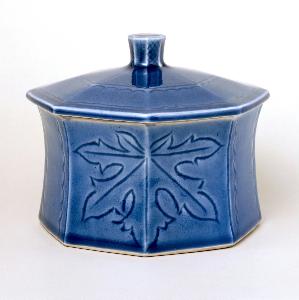Tomimoto Kenkichi
Tomimoto Kenkichi
Place: Nara
Born: 1886
Death: 1963
Biography:
Tomimoto Kenkichi, a Japanese potter and Living National Treasure, was born on June 5, 1886, in Nara, Japan. He is renowned for his exceptional skills in designing and creating beautiful Japanese-lacquered zelkova shelves, such as the 'kingin-sai kazari tsubo' for the Ume-no-Ma audience room of Tokyo Imperial Palace. Tomimoto Kenkichi's work is characterized by its unique blend of traditional Japanese techniques and modern artistic expressions.
Early Life and Career
Tomimoto Kenkichi received his early training in pottery from his father, who was also a skilled potter. He later moved to Tokyo, where he continued to hone his skills and develop his own distinctive style. In 1914, Tomimoto married Otake Kazue, with whom he had three children.
Awards and Recognition
Tomimoto Kenkichi's outstanding contributions to the world of pottery earned him numerous awards and recognition. He was designated as a Living National Treasure in Japan, a prestigious title given to individuals who have made significant contributions to the country's cultural heritage.
Artistic Style and Legacy
Tomimoto Kenkichi's artistic style is characterized by its emphasis on traditional Japanese techniques, such as lacquerware and pottery. His work can be found in several museums around the world, including the Gifu Prefectural Ceramics Museum, the Ohara Museum of Art, and the Museum of Fine Arts, Boston. Tomimoto Kenkichi's legacy continues to inspire artists and potters around the world. Some of his notable works can be found on Wikioo.org, which offers a wide range of handmade oil paintings reproductions and print on canvas of famous artwork, including Tomimoto Kenkichi's designs.
Notable Works and Collections
Some notable works by Tomimoto Kenkichi include:
- Kingin-sai kazari tsubo, a large Japanese-lacquered zelkova shelf designed for the Ume-no-Ma audience room of Tokyo Imperial Palace.
- His work is also featured in several museums, including the Cleveland Museum of Art, the University of Michigan Museum of Art, and the Museum of Modern Art, Kamakura & Hayama.
Tomimoto Kenkichi passed away on June 8, 1963, but his legacy lives on through his beautiful pottery designs and the many artists he inspired. His work continues to be celebrated and admired by art lovers around the world, and can be found in various museums and collections, including those listed on Wikioo.org.














